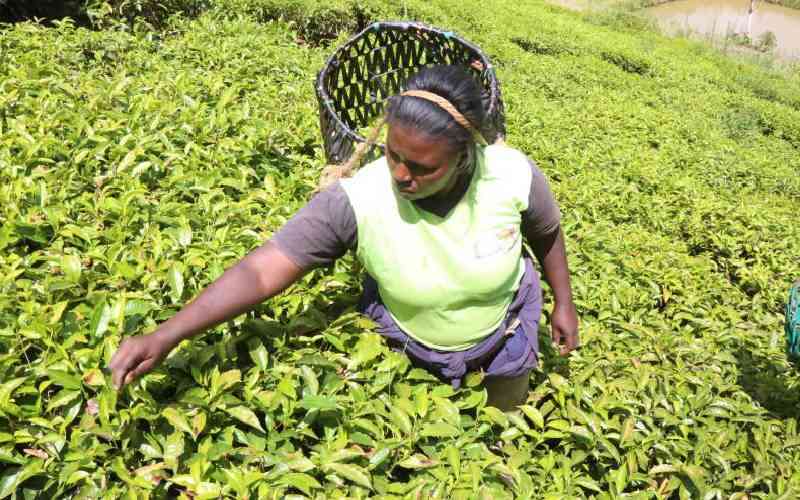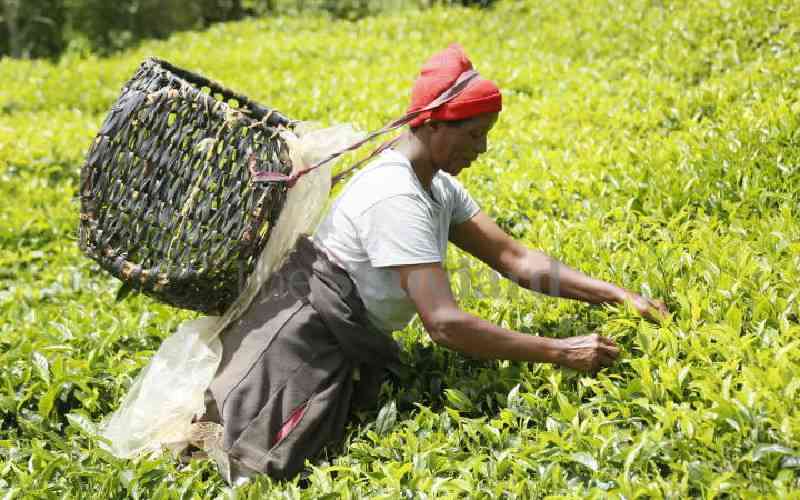The tea sector has been highly charged in the past few months, with farmers up in arms over low bonus payments received this year.
They say they could have been shortchanged. However, the Kenya Tea Development Agency (KTDA), a company owned by about 600,000 small-scale farmers, says the low payment is due to low market prices of tea blamed on oversupply in the international market.
There has been a global glut that has hurt tea prices. Tea prices have fallen in the three top exporter countries — Kenya, India and Sri Lanka — as tea supply surpasses world consumption.
Production will likely go up further as Malawi, Sri Lanka and Indonesia increase their supply thanks to favourable rains. China, the world’s largest tea producer, India, the second largest, and Vietnam are passing through their main cropping season.
Kenya has received above average rainfall in tea growing zones for the better part of this year, which has seen production go up drastically.
The decline in tea prices, to an average of $2.41 per kg at the Mombasa auction, was noted from May last year as a result of high production of tea. By April, production had surpassed consumption by 66 million kgs. Current prices are averaging at $2.34 per kg, compared to average prices of $3.18 per kg in 2012.
Indeed, the industry has had several years of exceptionally high prices, prior to this year’s crash, driven by global demand. Kenya’s smallholder farmers reaped the reward through record high bonus payments, sustained by the high prices and a stable exchange rate.
The honeymoon now appears to be over, and according to projections by the UN Food and Agricultural Organisation (FAO), the supply and demand for black CTC tea, for which Kenya is the world’s leading exporter, will reach equilibrium in 2021 at a price of $2.75 per kg if the current production levels continue.
This means the current crisis could continue for the next seven years. But it seems the sector needed this crisis for a rethink. For the first time in recent times, all tea industry players met under one roof at a national conference convened by the Senate Standing Committee on Agriculture, Livestock and Fisheries in Nairobi and agreed that the sector, which has been Kenya’s leading foreign exchange earner for a number of years – topping Sh114 billion in export revenue last year, needs re-engineering to overcome current challenges.
Addressing the conference dubbed “Crisis in Tea Trade and The Way Out”, the chairman of the Senate Agriculture Committee, Kiraitu Murungi, observed that “over the last 50 years, the tea sector has been the most stable and the best managed of all agricultural sectors in Kenya. This story has changed and the tea sector faces numerous challenges which require urgent interventions to streamline and strengthen the sector institutions. Like coffee, tea is fast becoming a political crop.”
Stakeholders, drawn from the entire tea value chain, from producers, marketers, manufacturers, traders and the government regulator, recommended setting up of a price stabilisation fund and introduction of fertiliser subsidy to cushion farmers, as well as practical action on tea value addition and market diversification as some of the ways to give the sector a much-needed boost.
Agriculture Cabinet Secretary Felix Koskei appeared to have anticipated the demands by stakeholders when he announced the ministry was setting up a Price Stabilisation Fund and a minimum monthly green leaf payment system for farmers.
“The process of identifying a consultant to develop a feasible model is on-going,” he said. He had more good news for tea farmers when he announced that the ministry had included tea farmers in the government subsidised fertiliser programme from this financial year.
Apart from the price of fertiliser, the tea industry is grappling with high energy, electricity and labour costs and is weighed down by a wide range of taxes and levies – more than 40 – which stakeholders say are crippling the sector.
The conference recommended a review and rationalisation of all taxes and levies in the sector, especially the ad valorem levy introduced in March 2012 (charged on Kenyan tea at the rate of one per cent of sales value at the point of export), VAT and road cess.
Stay informed. Subscribe to our newsletter
The fact that Kenya relies heavily on five core export markets - Egypt, Pakistan, UK, Afghanistan and Sudan, which all account for over 80 per cent of tea exported from Kenya – has come to haunt the sector.
As Dr James Nyoro, Advisor to the Presidency on Food Security, pointed out, “As a leading producer and exporter, Kenya should be a price setter, not a price taker, as is the case today. Tea is a dynamic product that is traded in a dynamic global market. We need a diversified portfolio of products to give us an edge in the changing consumer market.”
KTDA Chief Executive Officer Lerionka Tiampati pointed out that that three of its 66 factories were already on course to produce orthodox and other specialty teas and more across the country were also planning similar investments.
Mr Tiampati said whereas the agency had put in place measures to manage production costs, such as investments in small hydro projects and a wood fuel project, the continued subdivision of land that made tea farms uneconomical was a matter of grave concern. He urged the government to formulate policy to address the issue.
The Agency, he said, was actively seeking new tea markets and was targeting Russia, Indonesia, Malaysia, Australia, the Americas and the rest of Africa. Kenya Tea Growers Association CEO Apollo Kiarii representing multinational and other large producers, said the industry was facing the worst times ever with a persistent depressed market and low prices at below $2 (Sh168) per kilo at the auction.
This, he says, has been made worse by the increased cost of doing business characterised by multiple taxes and levies, high cost of energy, increased cost of inputs, high cost of packaging, land issues and lack of innovation. “There are more than 40 taxes and levies affecting the tea industry in Kenya including Ad Valorem Levy, county government fees and charges,” he said.
The association is now demanding that the government allows for offsets of VAT against other taxes such as PAYE and corporate tax to lessen the tax burden on the sector.
The East African Tea Trade Association (EATTA) MD Edward Mudibo said: “There is a disconnect in the sector resulting from a steep growth in production and flat growth in imports by key markets. Kenya’s tea industry must adapt quickly or perish.”
EATTA observed that Kenya faces a challenge of a concentrated market portfolio where the top six markets account for 77 per cent of all exports — compared to China 42 per cent, Sri Lanka 57 per cent and India 68 per cent.
KTDA Chairman Peter Kanyago dispelled the notion that any one entity could manipulate tea prices.
He asked the government to champion value addition by creating a conducive business environment since it requires investment in machinery, packaging and marketing.
 The Standard Group Plc is a
multi-media organization with investments in media platforms spanning newspaper
print operations, television, radio broadcasting, digital and online services. The
Standard Group is recognized as a leading multi-media house in Kenya with a key
influence in matters of national and international interest.
The Standard Group Plc is a
multi-media organization with investments in media platforms spanning newspaper
print operations, television, radio broadcasting, digital and online services. The
Standard Group is recognized as a leading multi-media house in Kenya with a key
influence in matters of national and international interest.
 The Standard Group Plc is a
multi-media organization with investments in media platforms spanning newspaper
print operations, television, radio broadcasting, digital and online services. The
Standard Group is recognized as a leading multi-media house in Kenya with a key
influence in matters of national and international interest.
The Standard Group Plc is a
multi-media organization with investments in media platforms spanning newspaper
print operations, television, radio broadcasting, digital and online services. The
Standard Group is recognized as a leading multi-media house in Kenya with a key
influence in matters of national and international interest.







